
Part I ( 20 September 2021 to 24 September 2021)
Gaya is a sacred place located in the ancient region of Magadh which is also one of the administrative divisions of the present day Bihar. There is literary evidence in the Nirukta to associate Gaya with the Vedic myth of the three giant strides of Lord Vishnu. Bodhgaya in its vicinity became celebrated as the seat of Enlightenment of Buddha in the sixth century BC. The Vishnupada Mandir in Gaya is believed to be situated on a mythic rock called Gayashiras at the banks of river Phalgu. It has footprint (pada=foot) of Lord Vishnu, hence the name of the temple. The rock is considered to be the head of a demon called Gayasura whom Lord Vishnu pressed under his feet to control his intense obsession with religious practice. The rest of the body of the demon also turned into hills and rocks forming the landscape of Gaya. The climax of the Gayasura myth is when Lord Vishnu grants a boon to him that by performing piNDa-dAna of the deceased over his body shall liberate their souls. In Sanskrit piNDa also means ‘mortal body’ and philosophically speaking, attaining Vishnu-pada means ‘liberation.’ Thus, goes the legend of Gaya in the Mahabharata and various Puranas that were composed in the ancient era of Indian history.
Several liturgical texts of medieval period speak about Gaya Mahatmya, that is, Excellence of Gaya as a sacred place for ancestral rites (pitR-tIrtha). Even today hundreds of thousands of Hindus from all parts of India and abroad make the pilgrimage to Gaya every year for performing ShrAddha of their forefathers. The elaborate rites and rituals go on for the 16 days of the pitR-pakSa, sequentially at several locations, including the rivers, water bodies, trees, hills and built-up shrines in and around the Vishnupada Mandir. The large influx of pilgrims and scarcity of time makes it difficult for most of them to visit all the sacred places in Gaya as laid down in the Puranas and liturgical texts. However, some places are considered more sacred than the rest and cannot be bypassed.
Ved-Madhuri meet the devout on the pilgrimage to Gaya who have come here for the benefit of the souls of their ancestors during the 17 day of pitR-pakSa (from Bhadrapada Purnima on 20 September 2021 to Ashwin Amavasya on 6 October 2021.) This year the fifth lunar date (pancamI) extended over two days, i.e. 25 and 26 September, 2021. This series of three articles features ShrAddha rituals witnessed at the sacred spots of Gaya region along with a photo gallery and brief notes.
Day 1: Bhadrapada PurnimA (Monday, 20 September, 2021) Location: Phalgu river.
Phalgu river flows to the East of Gaya. The river bed is dry for most part of the year. However, during the Monsoon, it carries rain water which sometimes floods its sandy banks during the ShrAddha fortnight.
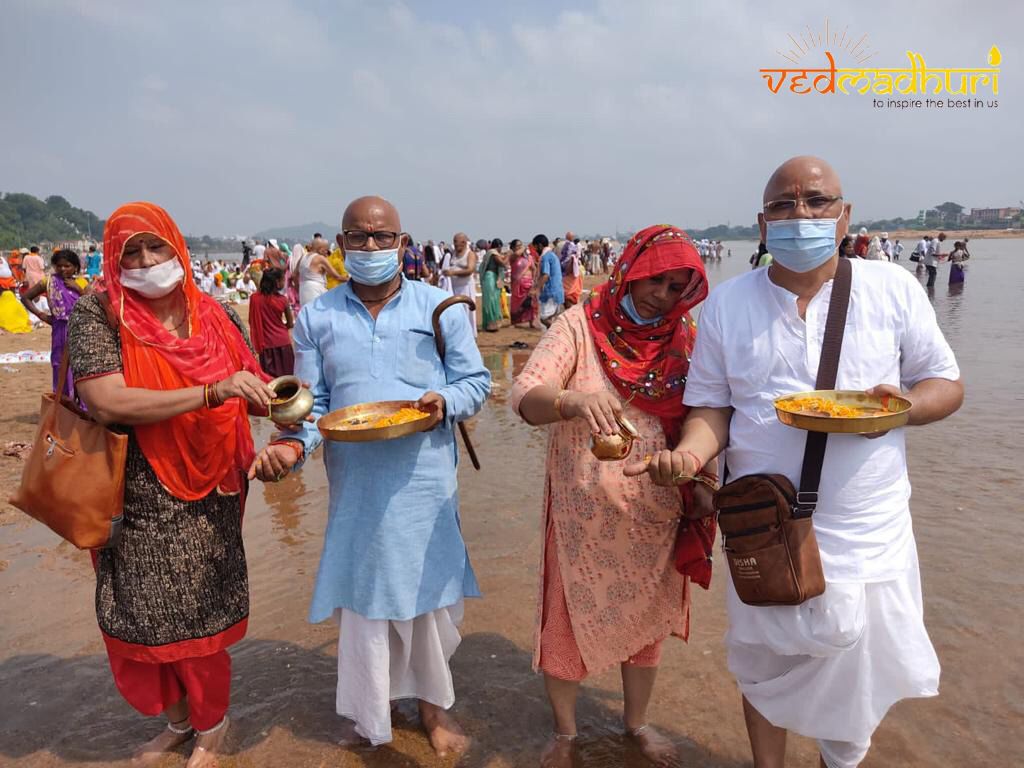
(The libation is offered by the son from
pitR-tIrtha of the right hand; who is joined by his wife) 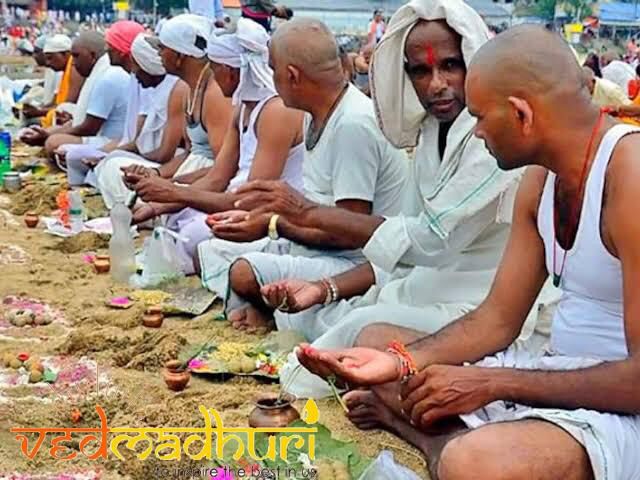
(Kusha is held in between thumb and index finger with tip of the grass blades pointing to the South)
Day 2: Ashwina Krishna Pratipada ( Tuesday, 21 September, 2021) Location: The Preta-parvata complex (Pretashila, Ramakunda and Ramashila) approximately 8 Km. off Vishnupada Mandir
Preta in Sanskrit means the elemental spirit, which is the state of existence of the soul (jIva) after leaving the mortal body. The word parvata means the hill; and shila means the rock. The foot of Preta-parvata came to be known as Ramashila after Lord Rama visited here to offer worship to the departed soul of his father king Dasharatha, as mentioned in Ananda Ramayana. The classical ritual of offering cereal cake (piNDa) to the Pitars (manes) starts from this spot whence they are freed from the preta-existence. It is especially desirable for those whose sapiNDIkaraNa rite (admission to the line of manes) could not be performed earlier. The ritual of second day at Pretashila is then followed on the rest of the days of pitR-pakSa at all the spots. Dhamin brahmins, a special class of local priests, conduct the ritual at this spot; whereas Gayawal brahmins do it at rest of the places.
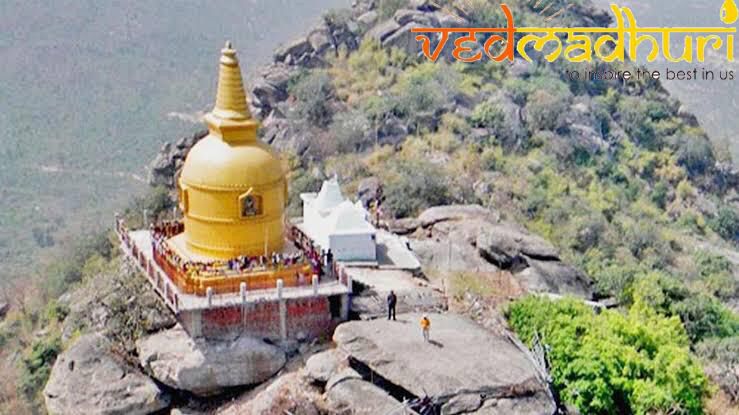
(A flat rock is also used as the vedi or the platform where piNDa is offered to the manes; besides the main vedi inside the built up temple.)
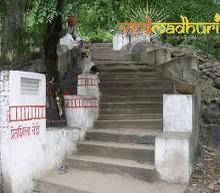
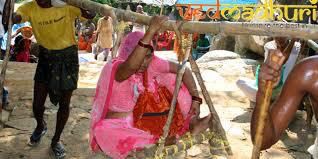
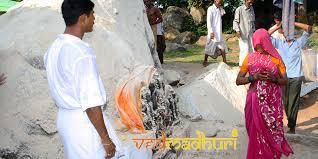
(The idols of Lord Vishnu and Devi Laxmi are typical of the sculpture belonging to the Pala period.)
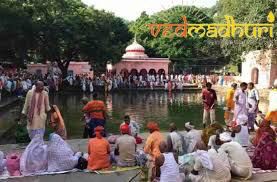
(Located at the foot of Prabhasa hill where Phalgu takes a turn towards Gaya.)

( Kakabali (काकबलि) means feeding the crow; feeding birds propitiates the spirit. Seeds and grains are scattered on the platform around the tree.)
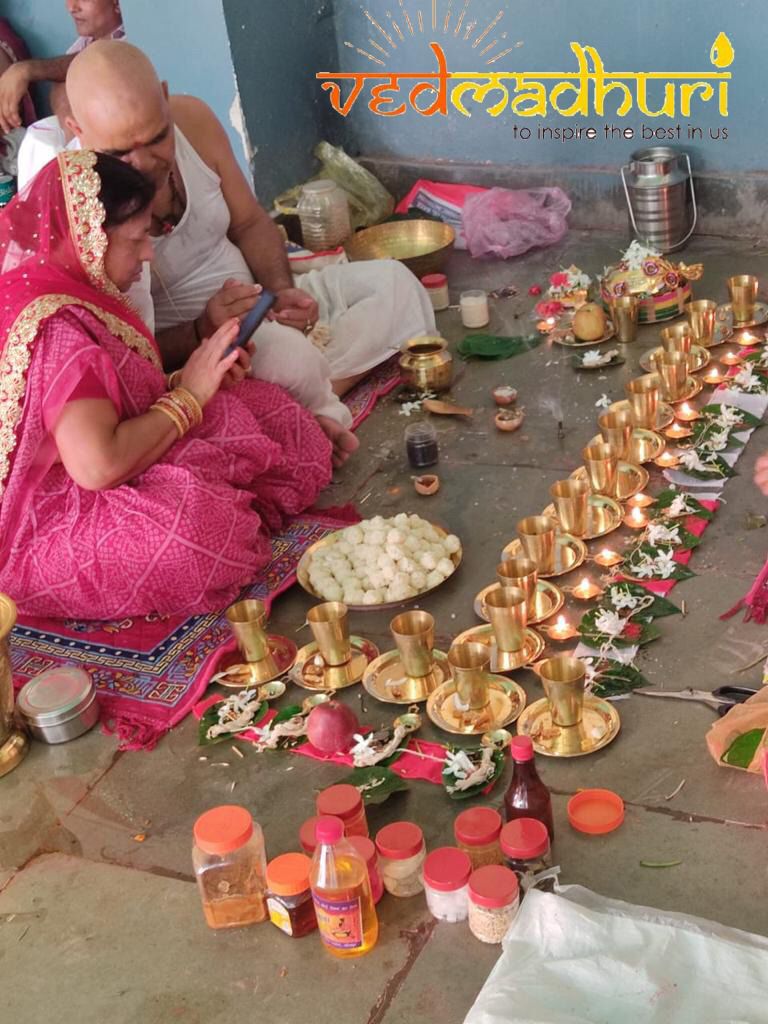
(12 pindas along with utensils, flowers, betel leaves and lighted lamps are offered to three male and three female ancestors in the patrilineal line of descent of both the parents.The remaining 6 are for the mythic manes- Kavyvad Agni, Soma, Barhishad, Somapa, Aryama and Agnishvatta.)
Day 3: Ashwina Krishna Dwitiya (Wednesday, 22 September, 2021) Location: Uttara-Manas Vedi; 2 Km to the North of Vishnupada Mandir
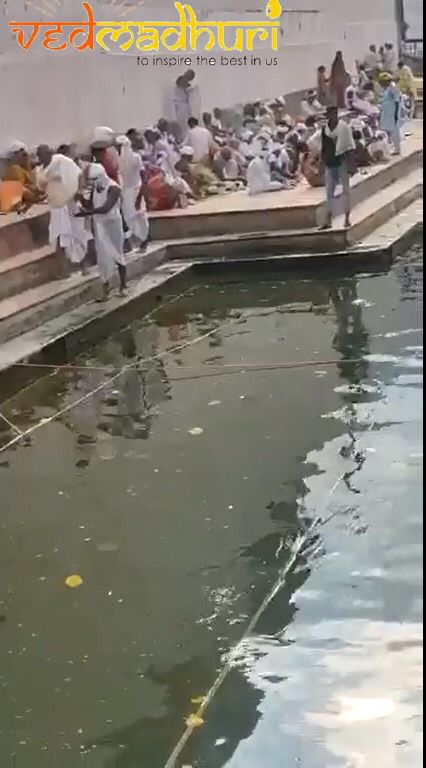
(Historical evidence of digging up this tank and construction of a Sun temple by prince Yakshapala is found in the 1040 AD inscription of king Nayapala.)
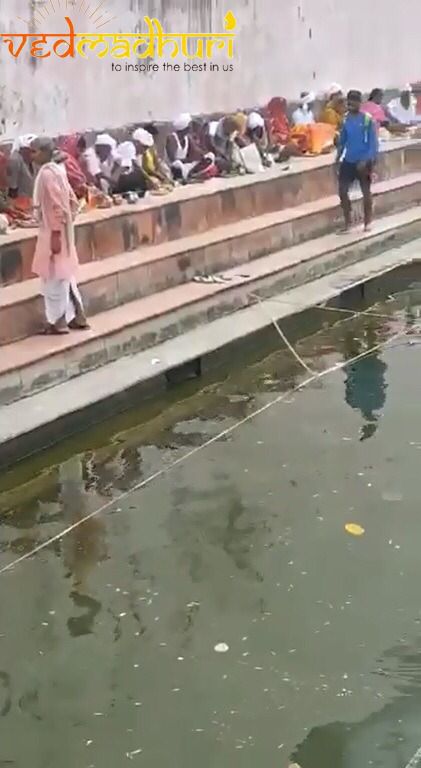
(Offering libations to Sun God and piNDa to the manes at this spot is regarded as the first amongst a sequence of paNca-tIrthI rites to be performed at five closely located sacred spots, Uttara-Manas, Udici, Kankhal, Dakshina-Manas and Gadadhar.)

(This ShrAddha at Phalgu river results in liberation of both the performer and is manes:
मुक्तिर्भवति कर्तृणाम् पितृणाम् श्राद्धतः सदा-Vayu Purana 110.13
It is stated that Phalgu is Adi-Gadadhara himself in a fluid form:
गंगापादोदकं विष्णोः फल्गुर्ह्यादिगदाधरः– Vayu Purana 111.16)
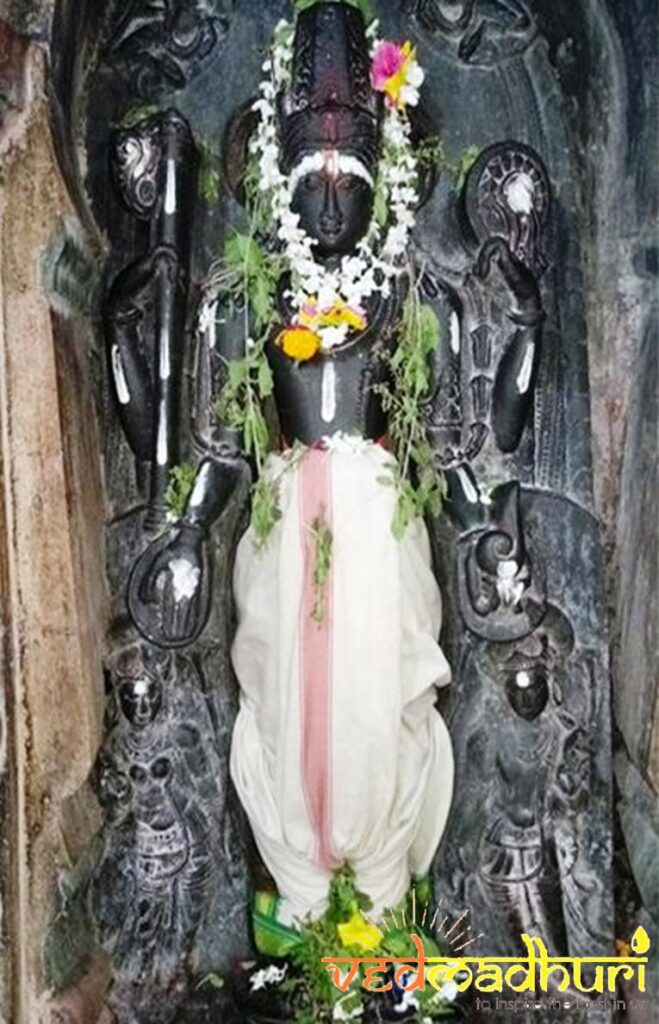
(This idol of Lord Vishnu, as the holder of mace (i.e. gadA in Sanskrit) is regarded amongst the most sacred of the Vishnu iconography in the Eastern India.)
Day 4: Ashwina Krishna Tritiya (Thursday, 23 September, 2021) Location: Dharmaranya (at Bodhgaya) including Matanga-vapi
Dharmaranya is the ancient forest where now a village of same name is located in Bodhgaya sub-division. Here Lord Buddha camped before he attained Enlightenment under the famous Peepal tree (Ficus relegiosa) which is inside the Mahabodhi temple, regarded as the most sacred to Buddhists from all over the world. The Shaivite tradition believes the place to be associated with Sage Matanga. Shaivism and Mahayana Buddhism have had an intricate and complementary relationship. A Shiva temple and the temple of Goddess Matangi, included among the Ten Mahavidyas (Great Wisdom personified as ten goddesses in Tantric Buddhism) is situated here. Offering ancestral worship in this region is considered sacred. The visit to Mahabodhi temple and veneration of the Bodhi-taru (the celebrated Peepal tree) is essential part of ancestral worship, as documented in the Puranas. Hence, the tradition is a link between the Buddhist temple and the PitR Tirtha circuit of Gaya and both have co-existed for a long time in the history.
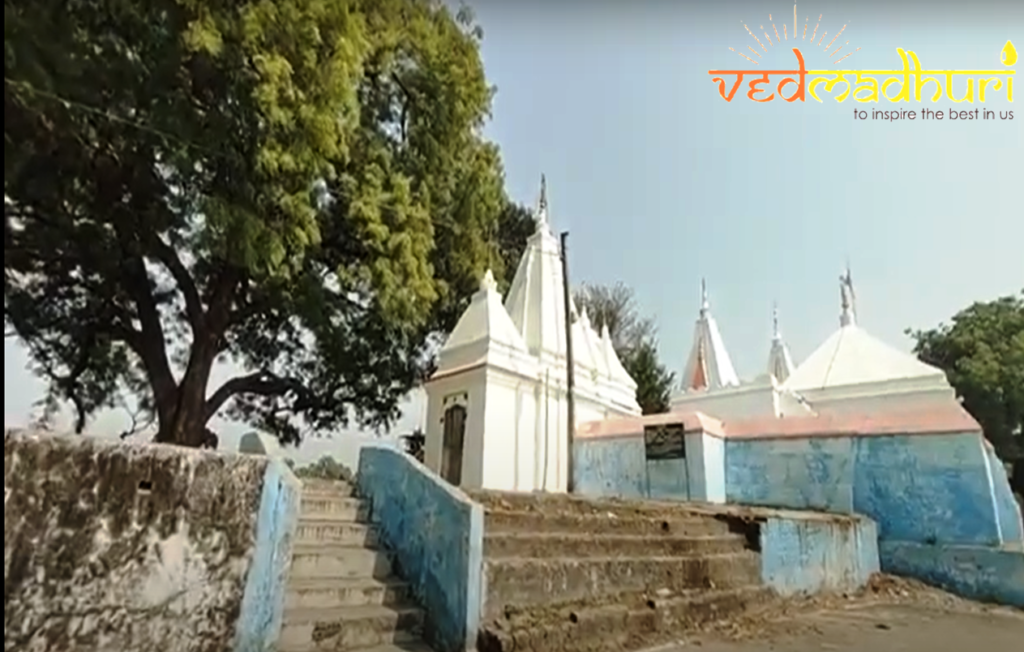
(The exterior is simple, although the temple is old enough as evident from the rock-cut slabs used in the interior. It speaks of the vicissitudes that Gaya has undergone in the course of her long history.)
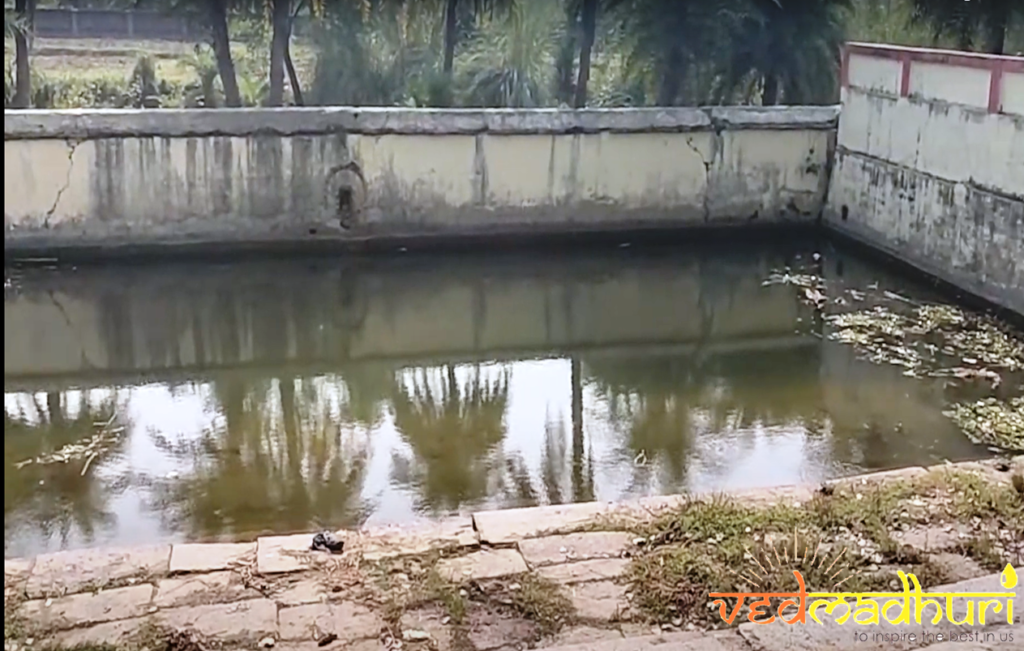
(The first step of ShrAddha at Dharmaranya is making ablutions in Matanga-vapi; (vApI means a water tank in Sanskrit) which is followed by offering tarpana and piNDa to the manes at different spots.)
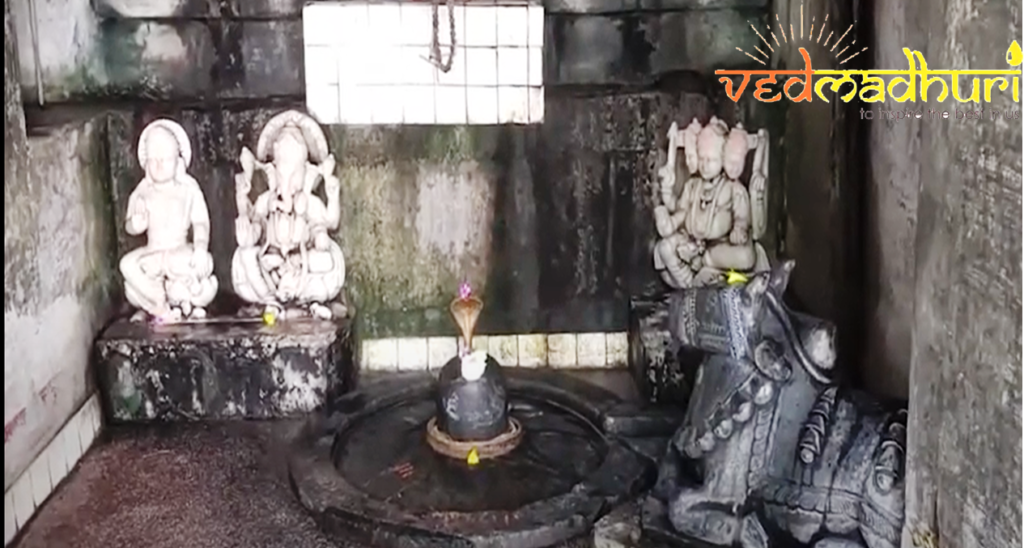
(Lord Shiva in his linga form is ubiquitous and takes the name of the place or the local myth. Here, he is the Lord of Dharmaranya or the Lord of Matanga.)
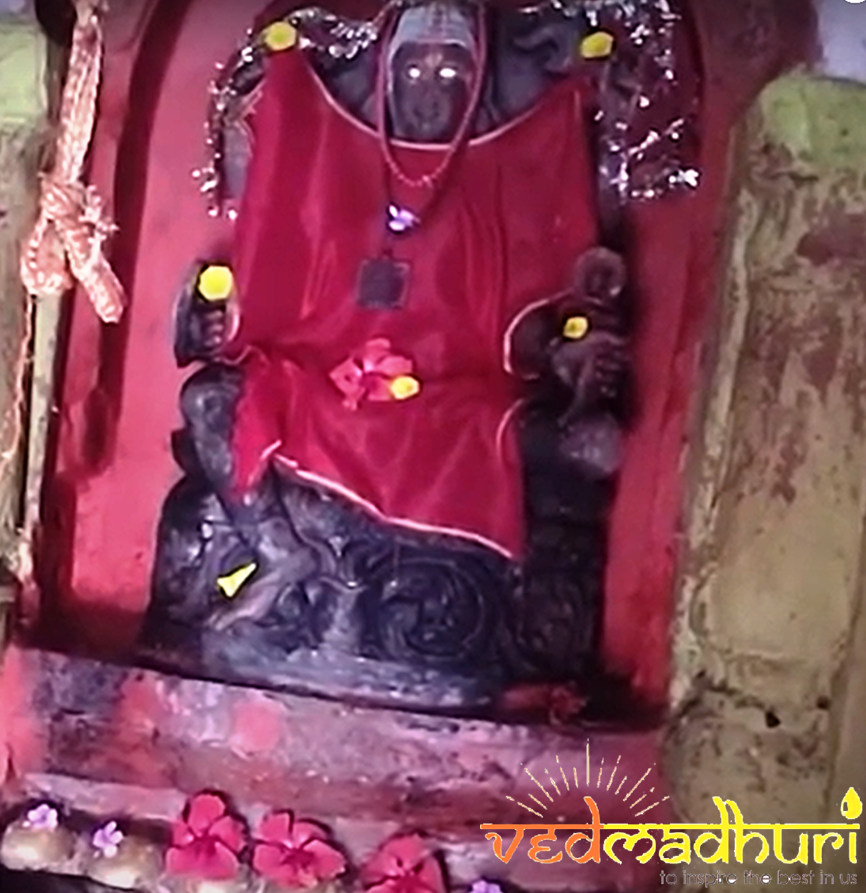
(The iconography and motifs furnish evidence of tantric worship. Please note the round piNDas below the pedestal, total ten in number, representing the Ten Mahavidyas.)
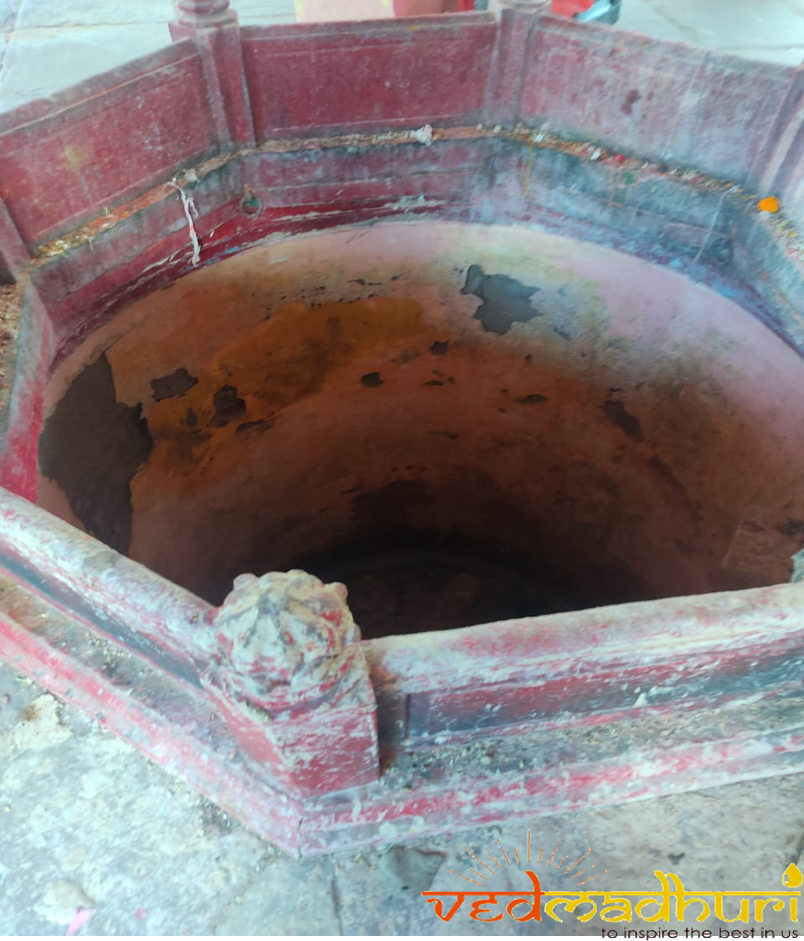
( The piNDas are dropped inside this well (kUpa in Sanskrit), which is about 3 Km South-east to Matanga-Vapi. The place is mentioned in the Mahabharata.)
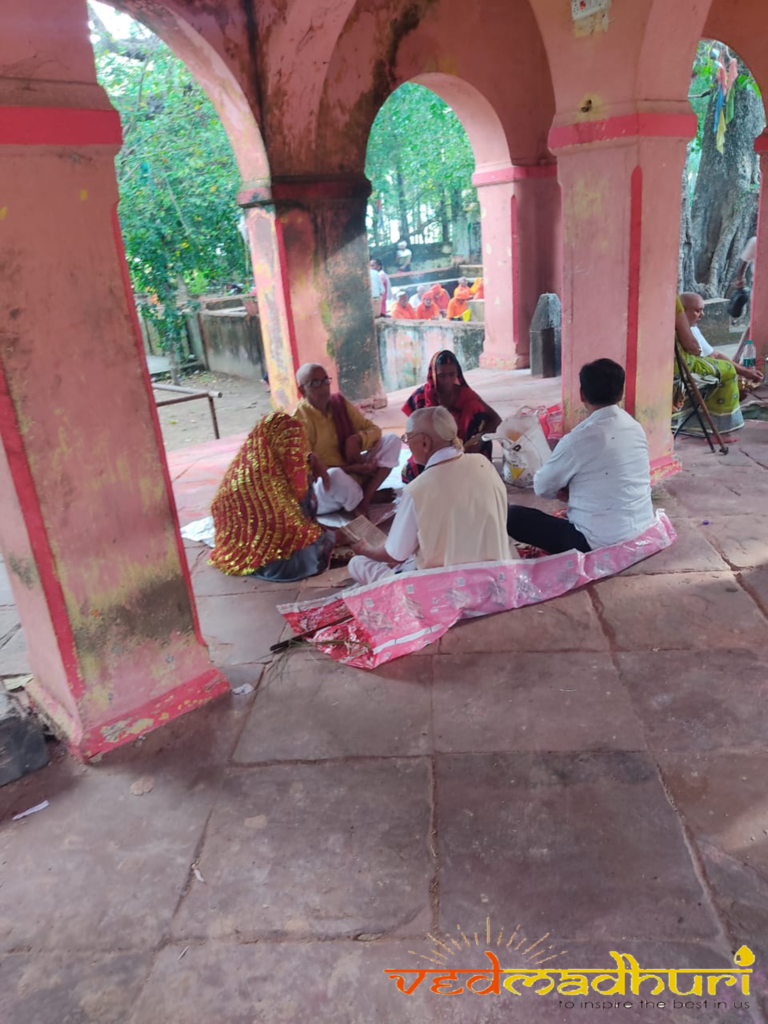
(The colonnade is around the well. It is believed that the line of descent is maintained and the couple who perform the ritual here are blessed with a son.)
Day 5: Ashwina Krishna Chaturthi ( Friday, 24 September, 2021) Location: Brahmasarovara near bypass, Mangla Gauri Road
On the fifth day, the pilgrim take bath in the Brahma-sarovara (the pond of Lord Brahma) and offer piNDa at the ‘Yupa,’ that is, the sacrificial post where a mythical sacrifice was made by Lord Brahma on the body of Gayasura. There is a ritual of offering bali to the crow (kAkabali) here also. It is followed by pouring water on a place where a mango tree had once stood as indicated in the Vayu Purana and medieval liturgical texts.
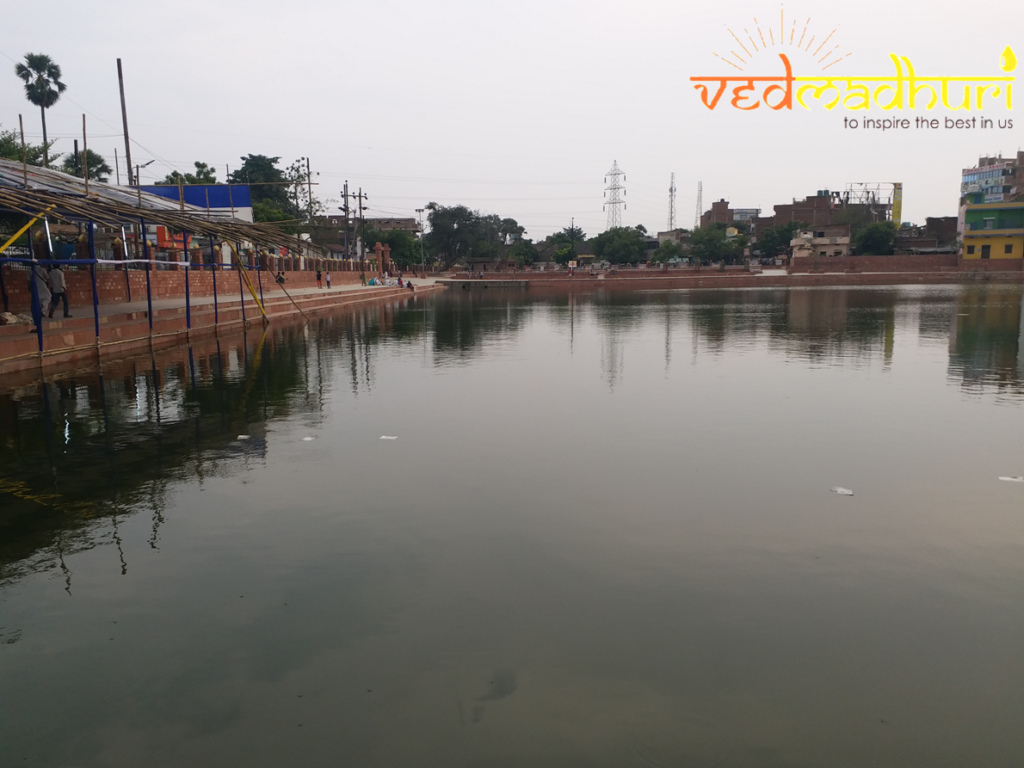

(The boundary of Brahma-sarovara is solid brickwork platform with steps allowing people to circumambulate, bathe and offer worship near the pond.)
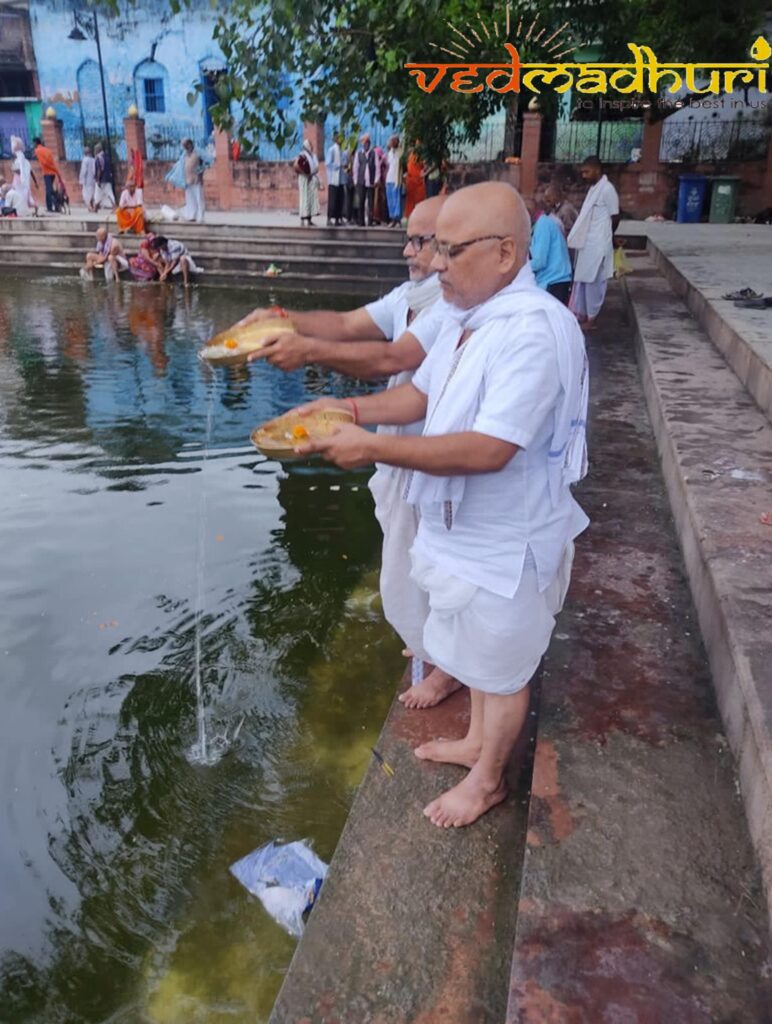
To be continued…..
